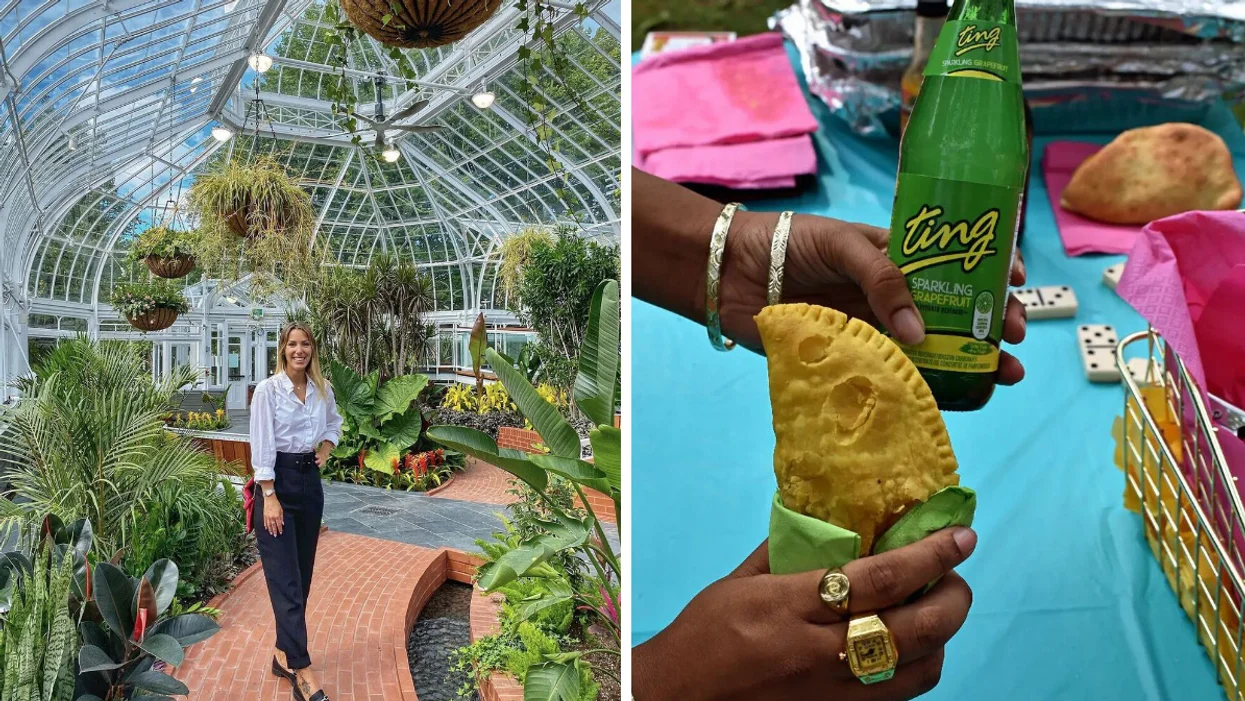‘Major work’ on the STM’s blue line extension is FINALLY starting
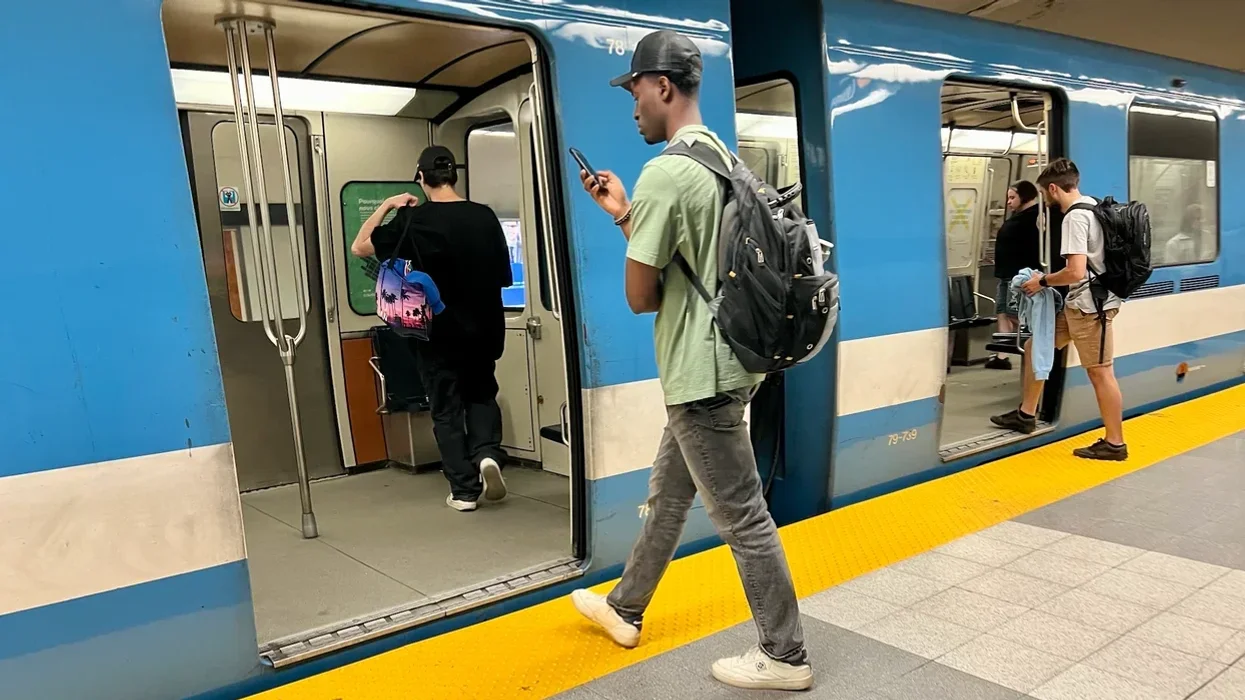
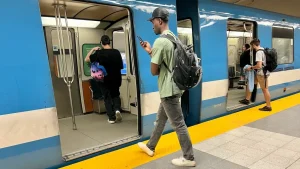
‘Major work’ on the STM’s blue line extension is FINALLY starting
The long-awaited extension of the STM’s (Société de transport de Montréal) Blue Line is finally taking a significant step forward, marking a crucial moment in Montreal’s public transit development. This “Major Work” is not just a transportation project but a monumental investment in the city’s future, promising to enhance connectivity, ease congestion, and spur economic growth in the eastern parts of Montreal.
Background: The Blue Line Extension
The Blue Line, which currently runs from Snowdon in the west to Saint-Michel in the east, has long been a vital artery in Montreal’s metro system. However, the eastern stretch of the city has been under-served by public transit, with residents relying heavily on buses and cars. The extension aims to address this imbalance, improving access to public transit for thousands of Montrealers.

The Scope of the Project
The extension will add five new stations, stretching the line by nearly 5.8 kilometers from its current terminus at Saint-Michel to Anjou. The new stations will be located in some of the city’s most densely populated and economically diverse neighborhoods, including Pie-IX, Viau, Lacordaire, Langelier, and Galeries d’Anjou. Each station is being designed with modern infrastructure, accessibility features, and provisions for future transit-oriented development.
Impact on Commuters
For the residents of eastern Montreal, the Blue Line extension will drastically reduce commuting times and provide a direct link to the city’s downtown core and other key areas. It is estimated that the new extension will cut travel time by up to 20 minutes for some commuters, easing the burden on overcrowded bus lines and reducing the dependency on cars. This will not only improve the daily lives of many Montrealers but also contribute to the city’s environmental goals by reducing greenhouse gas emissions.
Economic and Social Benefits
The extension is expected to be a catalyst for economic revitalization in the eastern neighborhoods of Montreal. By improving access to public transit, the project is likely to attract new businesses, increase property values, and stimulate job creation in the area. Additionally, the improved connectivity will facilitate access to educational institutions, healthcare facilities, and other essential services, contributing to a higher quality of life for residents.
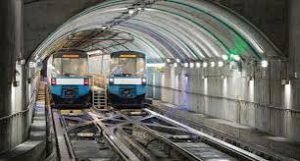
Challenges and Expectations
While the start of major work on the Blue Line extension is a cause for celebration, the project is not without its challenges. Like many large-scale infrastructure projects, it faces potential delays and budget overruns. There are also concerns about the disruption to local communities during the construction phase. However, the STM and city officials have pledged to work closely with residents and businesses to mitigate these impacts and ensure the project is completed as smoothly as possible.
A Vision for the Future
The Blue Line extension is more than just a transit project; it’s a vision for a more connected, sustainable, and vibrant Montreal. As the city continues to grow and evolve, the extension will play a crucial role in shaping its future, providing the necessary infrastructure to support Montreal’s ambitions as a leading global city.
In summary, the commencement of major work on the STM’s Blue Line extension marks a historic moment for Montreal. The project promises to bring long-term benefits to the city’s transportation network, economy, and residents, setting the stage for a more accessible and thriving metropolis.

Absolutely! We should dive further into the more extensive ramifications, local area commitment, and specialized parts of the STM Blue Line augmentation:
Extraordinary Capability of the Blue Line Extension
The Blue Line expansion addresses something beyond a foundation overhaul; an extraordinary venture can possibly reshape the social and financial scene of Montreal. For quite a long time, the eastern pieces of the city have confronted underinvestment and restricted admittance to proficient public transportation. This expansion is a vital stage toward tending to these incongruities and encouraging more prominent consideration inside the metropolitan structure.
Improved Portability and Accessibility
One of the main effects of the Blue Line expansion will be on portability. By broadening the metro administration into new regions, the undertaking will interface more neighborhoods to Montreal’s vigorous public travel organization. This implies quicker drives as well as further developed openness for all Montrealers, incorporating those with diminished versatility. The new stations will be furnished with lifts, elevators, and different highlights that meet or surpass current openness norms, guaranteeing that the metro framework is usable by everybody, paying little heed to actual capacity.
As well as working on everyday drives, the augmentation will open up new open doors for occupants in these areas. Admittance to occupations, schooling, and sporting exercises will be upgraded, making it simpler for individuals to partake in the city’s financial and social life. This is especially significant for lower-pay networks, where the expense and time related with driving can be critical boundaries to work and training.
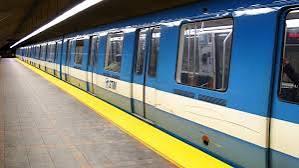
Local area Commitment and Consultation
The STM and the City of Montreal have put areas of strength for an on local area commitment all through the preparation and execution of the Blue Line expansion. Broad counsels have been directed to guarantee that the task mirrors the necessities and worries of neighborhood inhabitants. This has included public gatherings, studios, and criticism meetings intended to accumulate input on all that from station plan to development courses of events.
One of the key worries raised by networks has been the potential interruption brought about by development. Accordingly, the STM has focused on carrying out measures that limit clamor, residue, and traffic interruptions. They are likewise dealing with giving ordinary updates to keep occupants informed about the task’s advancement and any progressions that might influence them.
Moreover, the task has been planned with an emphasis on manageability and limiting natural effect. This remembers the utilization of green advancements for station development, endeavors to protect nearby green spaces, and drives to support the utilization of public travel over confidential vehicles, consequently lessening the city’s general carbon impression.

Specialized and Designing Challenges
The Blue Line expansion isn’t just a huge metropolitan improvement project yet in addition a designing accomplishment. Broadening the metro includes complex burrowing work, the development of new underground stations, and the mix of cutting edge flagging frameworks. These specialized provokes require cautious preparation and execution to guarantee that the undertaking is finished on time and inside spending plan.
Burrowing and Station Construction
The development stage includes broad burrowing under thickly populated metropolitan regions, which presents a few difficulties. Engineers should explore existing framework, for example, water and sewer lines, without making disturbances fundamental administrations. To accomplish this, they use best in class burrowing machines and utilize methods that limit ground development and vibration.
Every one of the five new stations is being intended to oblige future development and expanded ridership. They will highlight wide stages, present day lighting, and ventilation frameworks, as well as open craftsmanship establishments that mirror the remarkable person of every area. The objective is to make stations that are useful as well as act as local area milestones.
Combination with Existing Travel Systems
A basic part of the undertaking is guaranteeing that the Blue Line expansion consistently incorporates with Montreal’s current travel organization. This includes planning with transport courses, adjusting the passage framework, and guaranteeing that the new line is very much associated with other metro lines. The STM is likewise considering future-sealing the framework by consolidating innovation that could uphold computerized train activities before very long.
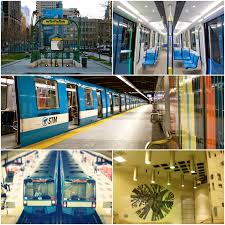
Long haul Vision and Future Expansion
The Blue Line expansion is essential for a more extensive vision for Montreal’s travel future. It lines up with the city’s well defined courses of action to lessen vehicle reliance, advance supportable metropolitan turn of events, and unveil travel the foundation of Montreal’s transportation framework. The expansion will probably act as a model for future travel projects in the city and then some.
As Montreal keeps on developing, further expansions of the metro framework might be thought of, possibly interfacing significantly more distant region of the city. Moreover, there are conversations about coordinating the metro with different methods of transportation, like BRT (Transport Fast Travel) and bicycle sharing projects, to make a completely interconnected travel environment.
Financial Impetuses and Metropolitan Development
The regions encompassing the new Blue Line stations are supposed to see critical financial turn of events. This incorporates the production of new ad and private spaces, which will add to the dynamic quality of these areas. The expansion is likewise liable to draw in new organizations, from retail locations to tech new companies, drawn by the better admittance to a bigger client and ability pool.
Land nearby the new stations is supposed to appreciate, helping land owners and possibly prompting expanded charge incomes for the city. In any case, this additionally raises worries about improvement and moderateness, gives that the city should address through cautious preparation and the execution of reasonable lodging systems.
Decision: A Stage Toward a More Associated Montreal
The beginning of significant work on the STM’s Blue Line expansion is a critical achievement in Montreal’s excursion toward turning into a more associated, fair, and economical city. By growing the metro organization, the venture will carry enduring advantages to the city, from lessening gridlock and slicing discharges to encouraging monetary turn of events and working on personal satisfaction for occupants.
This expansion is something beyond a transportation overhaul; it’s an interest coming down the line for Montreal, one that will assist the city with meeting the difficulties of the 21st hundred years while saving the special person that makes Montreal such a dynamic spot to live. As the work advances, the fervor and expectation for what this venture will bring proceed
Certainly! Let’s explore further dimensions of the STM Blue Line extension project, focusing on the historical context, anticipated social transformations, environmental considerations, and the broader implications for Montreal’s urban planning.
Historical Context and Legacy
The Blue Line extension is the latest chapter in Montreal’s long history of metro development, a story that dates back to the 1960s when the original metro system was inaugurated. Since then, the metro has become an integral part of Montreal’s identity, shaping the way the city has grown and developed over the past six decades.
A Timeline of Growth
The idea of extending the Blue Line has been discussed for decades, with initial proposals dating back to the 1980s. However, various challenges—including funding constraints, political shifts, and competing priorities—led to delays. Over the years, the need for this extension became increasingly evident, as the city’s population grew and traffic congestion worsened.
The decision to finally move forward with the Blue Line extension reflects a broader recognition of the importance of public transit in shaping the future of Montreal. It also highlights the city’s commitment to addressing long-standing regional inequalities by improving access to efficient, reliable transportation in underserved areas.
Building on the Metro’s Legacy
Montreal’s metro system is renowned for its distinctive design, with each station featuring unique architectural elements and public art. The Blue Line extension will continue this tradition, with the new stations designed to be both functional and visually striking. Architects and urban planners are working to ensure that these stations reflect the cultural and historical context of the neighborhoods they serve, creating spaces that are not only transit hubs but also community landmarks.
Anticipated Social Transformations
The Blue Line extension is expected to be a catalyst for significant social change in Montreal, particularly in the eastern neighborhoods that will benefit from the new metro stations. These areas, which have historically been less connected to the city’s core, are likely to experience a wave of social and economic revitalization.
Bridging the Gap
For many residents of eastern Montreal, the lack of reliable public transit has been a barrier to accessing the city’s wealth of opportunities. The Blue Line extension will help bridge this gap, providing a direct link to downtown Montreal and other key areas. This improved connectivity is expected to have a profound impact on social mobility, enabling residents to access better jobs, education, and services.
The extension is also likely to enhance the cultural vibrancy of these neighborhoods. With easier access to the rest of the city, residents will have more opportunities to participate in Montreal’s rich cultural life, whether it’s attending festivals, visiting museums, or exploring new neighborhoods. This increased connectivity will help foster a sense of belonging and inclusivity, making Montreal a more integrated city.
Mitigating Gentrification
While the Blue Line extension is expected to bring numerous benefits, it also raises concerns about gentrification and the potential displacement of long-term residents. As property values rise and new developments spring up around the new stations, there is a risk that the very communities the extension aims to benefit could be priced out of their neighborhoods.
To address this, the city and STM are working on strategies to mitigate the impact of gentrification. These include policies to ensure the development of affordable housing, protections for renters, and initiatives to support local businesses. By taking a proactive approach, the city hopes to ensure that the benefits of the Blue Line extension are shared equitably and that the character of these neighborhoods is preserved.
Environmental Considerations
The Blue Line extension is a key part of Montreal’s efforts to create a more sustainable city. By providing an attractive alternative to car travel, the extension is expected to reduce traffic congestion and lower greenhouse gas emissions, contributing to Montreal’s broader environmental goals.
Sustainable Design
The new stations and infrastructure are being designed with sustainability in mind. This includes the use of energy-efficient materials, advanced heating and cooling systems, and designs that maximize natural light. Additionally, the STM is exploring ways to incorporate green spaces and rainwater management systems around the new stations, further enhancing their environmental credentials.
The project also aligns with Montreal’s Climate Plan, which aims to reduce the city’s carbon footprint and promote sustainable urban development. By expanding the metro network, the city is encouraging more residents to use public transit, which is a critical component of reducing reliance on fossil fuels and combating climate change.
Promoting Active Transportation
In addition to expanding the metro, the Blue Line extension project includes initiatives to promote active transportation, such as walking and cycling. The new stations will be designed with facilities for cyclists, including secure bike parking and easy access to bike lanes. This integration of active transportation options will help create a more holistic and sustainable transit network, encouraging Montrealers to adopt greener modes of travel.
Broader Implications for Urban Planning
The Blue Line extension is part of a larger vision for the future of Montreal, one that emphasizes sustainable growth, equitable access to services, and the creation of vibrant, connected communities. The project is expected to serve as a model for future transit expansions and urban development initiatives in the city.
A New Model for Transit-Oriented Development
The areas around the new Blue Line stations are prime candidates for transit-oriented development (TOD), an approach that focuses on creating high-density, mixed-use communities centered around public transit hubs. TOD has been shown to reduce car dependency, promote walkability, and create more vibrant, livable communities.
In Montreal, the Blue Line extension could be the catalyst for a new wave of TOD projects, leading to the development of new housing, retail, and office spaces near the metro stations. This, in turn, could help accommodate the city’s growing population while minimizing urban sprawl and preserving green spaces.
A Blueprint for Future Projects
The lessons learned from the Blue Line extension will be invaluable for future transit projects in Montreal and other cities. From community engagement and sustainability to technical challenges and financing, the experiences gained during this project will help inform the planning and execution of other major infrastructure initiatives.
The extension also highlights the importance of long-term planning and vision in urban development. By investing in public transit today, Montreal is laying the groundwork for a more connected, sustainable, and resilient city in the future.
Conclusion: Shaping Montreal’s Future
The Blue Line extension is more than just a metro project; it’s a bold step toward shaping the future of Montreal. By extending the reach of the city’s public transit network, the project will help create a more inclusive, sustainable, and vibrant Montreal.
As the work progresses, the excitement and anticipation for what this extension will bring continue to build. For residents of eastern Montreal, the project represents a long-awaited opportunity to become more connected to the rest of the city. For Montreal as a whole, it’s a chance to set a new standard for urban development and public transit, one that will serve as a blueprint for the city’s growth and evolution in the years to come.
Positively! We should hoist the conversation to a more scientific and visionary level, zeroing in on the essential significance of the STM Blue Line expansion with regards to metropolitan turn of events, financial elements, and the worldwide urbanization drifts that Montreal tries to explore.
Vital Metropolitan Turn of events: Rethinking Montreal’s Metropolitan Fabric
The STM Blue Line expansion isn’t simply a foundation project; an extraordinary drive flags a change in perspective in how Montreal imagines its metropolitan improvement direction. As urban areas overall wrestle with the difficulties of populace development, environmental change, and monetary disparity, the Blue Line augmentation addresses Montreal’s essential reaction to these worldwide objectives.
Metropolitan Thickness and Brilliant Growth
At the core of the Blue Line expansion is a promise to encouraging metropolitan thickness and shrewd development. By expanding the metro into under-served regions, the task means to reorient the city’s development designs from rural spread and toward a more focused, in an upward direction coordinated metropolitan climate. This approach lines up with the standards of maintainable urbanism, which underline the effective utilization of land, the conservation of regular spaces, and the formation of walkable, blended use networks.
Montreal’s choice to put resources into public travel over growing street foundation mirrors a profound comprehension of the drawn out advantages of metropolitan thickness. Denser urban communities are all the more earth practical as well as more monetarily dynamic and socially durable. The Blue Line expansion will subsequently act as an impetus for another influx of metropolitan improvement that focuses on conservative, associated, and maintainable areas.
Reconciliation with Territorial Planning
The Blue Line expansion is likewise a vital component of Montreal’s more extensive territorial arranging methodology, which looks to make a more interconnected and durable metropolitan region. By broadening the metro into the eastern rural areas, the task will improve network among Montreal and its encompassing districts, encouraging more noteworthy local incorporation.
This provincial methodology is fundamental for tending to the perplexing difficulties of urbanization in the 21st 100 years. As urban communities develop, they should progressively work as interconnected networks as opposed to disconnected elements. The Blue Line expansion is a basic move toward making such an organized metropolitan framework in Montreal, one that can productively move individuals, merchandise, and thoughts across the metropolitan locale.
Financial Elements: Value and Opportunity
Past its metropolitan arranging suggestions, the Blue Line expansion is an amazing asset for advancing social value and growing financial open door in Montreal. The expansion targets areas that have generally been minimized as far as open travel access, offering a pathway to more prominent social and financial consideration.
Lessening Spatial Inequality
Spatial imbalance, where various pieces of a city experience immensely various degrees of admittance to administrations and potential open doors, is a constant issue in numerous metropolitan regions. In Montreal, the eastern areas that will profit from the Blue Line augmentation have for some time been underserved by open travel, restricting occupants’ admittance to occupations, training, and medical care.
By carrying the metro to these areas, the Blue Line expansion will assist with lessening spatial imbalance in Montreal. Further developed travel access will make it more straightforward for occupants to associate with the more extensive metropolitan economy, improving their capacity to get more lucrative positions, seek after training, and access basic administrations. This, thus, will add to lessening pay disparity and advancing a more evenhanded dissemination of riches and opportunity across the city.
Catalyzing Financial Revitalization
The Blue Line expansion is likewise expected to act as an impetus for financial rejuvenation in the eastern pieces of Montreal. Further developed travel access normally prompts expanded interest in encompassing regions, as organizations try to benefit from the improved network and people walking through. This can prompt the advancement of new ad, private, and social spaces, which thus makes occupations and animates financial development.
For Montreal, this financial renewal isn’t just about helping Gross domestic product; it’s tied in with making energetic, comprehensive networks where individuals from varying backgrounds can flourish. The Blue Line expansion will assume a basic part in cultivating such networks, guaranteeing that the advantages of financial development are generally shared.
Worldwide Urbanization Patterns: Montreal’s Positioning
With regards to worldwide urbanization drifts, the Blue Line expansion positions Montreal as a ground breaking city that is proactively tending to the difficulties and chances of the 21st hundred years. As urban areas all over the planet face the twin tensions of quick urbanization and environmental change, Montreal’s way to deal with metropolitan travel offers significant illustrations.
A Model of Supportable Metropolitan Mobility
The Blue Line expansion represents how urban communities can use public travel to advance supportable metropolitan versatility. As urban communities develop, the requirement for productive, low-carbon transportation choices turns out to be progressively critical. By putting resources into metro extension as opposed to vehicle driven foundation, Montreal is situating itself as a forerunner in practical metropolitan turn of events.
This attention on practical portability isn’t just about lessening ozone depleting substance emanations; it’s additionally about upgrading personal satisfaction. Urban communities with vigorous public travel frameworks will generally have lower levels of gridlock, better air quality, and more dynamic populaces, all of which add to a better and more bearable metropolitan climate. The Blue Line expansion will assist Montreal with accomplishing these results, making it a more alluring spot to live, work, and visit.
A Visionary Way to deal with Metropolitan Resilience
As well as advancing manageability, the Blue Line augmentation likewise adds to Montreal’s metropolitan flexibility. As urban areas face expanding gambles from environmental change, monetary disturbance, and social agitation, the capacity to adjust and flourish despite these difficulties is basic. The Blue Line expansion upgrades Montreal’s strength by making a more associated, comprehensive, and adaptable metropolitan framework.
This visionary way to deal with metropolitan flexibility is reflected in the venture’s accentuation on local area commitment, maintainability, and long haul arranging. By including occupants in the arranging system, coordinating green advancements, and planning for future development, Montreal is guaranteeing that the Blue Line expansion won’t just address the present issues yet additionally be versatile to the upcoming difficulties.
Decision: Montreal as a Worldwide Metropolitan Leader
The STM Blue Line expansion is a striking and visionary undertaking that mirrors Montreal’s goals to be a worldwide forerunner in economical, fair, and strong metropolitan turn of events. By broadening the metro into under-served regions, the city isn’t just further developing travel access yet in addition establishing the groundwork for a more associated, lively, and comprehensive city.
As the world’s urban communities proceed to develop and advance, the difficulties they face will just turn out to be more complicated. Montreal’s way to deal with the Blue Line expansion — one that coordinates metropolitan preparation, social value, and manageability — offers a model for different urban communities trying to explore these difficulties. It is a demonstration of the city’s obligation to building a superior future for every one of its occupants, and a reasonable sign that Montreal is prepared to lead the way in the 21st hundred years.
To explore the STM Blue Line extension at an even higher level, we can frame the project within the contexts of global urban strategy, the intersection of infrastructure and societal evolution, and the role of public transportation in redefining city dynamics. Let’s dive into these areas, considering the profound implications of the project on Montreal and beyond.
Global Urban Strategy: Montreal’s Blueprint for Sustainable Cities
The STM Blue Line extension is not just a local infrastructure project but a strategic initiative with potential global significance. As cities worldwide confront the dual challenges of climate change and rapid urbanization, Montreal’s approach provides a blueprint for how public transit can be leveraged to build more resilient, equitable, and sustainable urban environments.
Pioneering the New Urban Agenda
Montreal’s Blue Line extension is emblematic of the principles espoused by the New Urban Agenda, adopted at the United Nations Conference on Housing and Sustainable Urban Development (Habitat III). The agenda calls for cities to prioritize compact, inclusive, and sustainable urban development, supported by integrated and accessible public transportation systems.
In this context, the Blue Line extension is a pioneering project that aligns with these global urban priorities. It exemplifies how cities can reduce their carbon footprint, promote social equity, and drive economic growth through strategic investments in public infrastructure. By extending the metro into under-connected areas, Montreal is setting a standard for how cities can overcome the spatial and social fragmentation that often accompanies urbanization.
Montreal’s strategy also recognizes that sustainable urbanization is a holistic endeavor. The Blue Line extension isn’t just about laying tracks and building stations; it involves integrating transportation with housing, land use, economic development, and environmental stewardship. This holistic approach ensures that the benefits of the extension are maximized across multiple dimensions of urban life.
Leadership in Climate Action and Urban Resilience
As global leaders increasingly call for cities to take bold action against climate change, Montreal’s Blue Line extension stands out as a proactive response. Public transit is one of the most effective tools for reducing greenhouse gas emissions in urban areas, and the extension will play a critical role in Montreal’s climate strategy.
The Blue Line extension is a tangible commitment to decarbonizing Montreal’s transportation system. By providing a viable alternative to car travel, the extension will help reduce vehicle emissions, alleviate traffic congestion, and improve air quality. This aligns with Montreal’s broader environmental goals, including its Climate Plan, which targets significant reductions in greenhouse gas emissions by 2030.
Moreover, the extension enhances urban resilience in the face of climate-related challenges. Cities must be able to withstand and adapt to the impacts of climate change, including extreme weather events, rising temperatures, and shifting economic conditions. The Blue Line extension contributes to this resilience by creating a more robust and adaptable transportation network that can support sustainable urban growth even as environmental conditions change.
Infrastructure and Societal Evolution: A Catalyst for Urban Transformation
Infrastructure is often seen as the backbone of a city’s development, but the Blue Line extension is more than just a functional upgrade; it is a catalyst for societal transformation. By reimagining public transportation, the project redefines how Montrealers interact with their city, how communities evolve, and how urban life is experienced.
Redefining Urban Connectivity
The Blue Line extension is a critical step in redefining urban connectivity in Montreal. Connectivity in a modern city is not just about physical infrastructure; it’s about creating an ecosystem where people, ideas, and opportunities can flow seamlessly. The extension will help knit together disparate parts of Montreal, fostering greater interaction and integration across the city.
This new level of connectivity will have profound implications for how Montrealers live and work. It will enable more dynamic labor markets by making it easier for people to commute between different parts of the city, and it will stimulate innovation by fostering greater collaboration and exchange across neighborhoods. As Montreal becomes more connected, the city will be better positioned to compete in the global economy, attract talent, and drive technological advancement.
A New Era of Social Inclusion
The Blue Line extension also marks the beginning of a new era of social inclusion in Montreal. Public transit has always been a powerful equalizer, providing mobility and access to services regardless of a person’s income or background. The extension amplifies this role by bringing metro access to neighborhoods that have been historically underserved.
This expansion of public transit is expected to be particularly transformative for marginalized communities. Improved access to jobs, education, and healthcare will help reduce poverty and enhance social mobility. Moreover, the Blue Line extension is likely to foster greater cultural exchange and understanding as it links diverse communities across the city, reinforcing Montreal’s identity as a multicultural metropolis.
The extension’s emphasis on accessibility also highlights its role in fostering a more inclusive city. By designing stations that are fully accessible to people with disabilities, Montreal is ensuring that everyone can benefit from the city’s public transit system. This inclusivity is a critical component of the city’s broader social equity goals, making the extension not just a transportation project, but a statement about the kind of city Montreal aspires to be.
Public Transportation and City Dynamics: Shaping the Urban Future
Public transportation is increasingly recognized as a fundamental driver of city dynamics, influencing everything from economic development to environmental sustainability to social cohesion. The STM Blue Line extension is a powerful example of how strategic investments in public transit can reshape a city’s future.
Driving Economic Development
The economic implications of the Blue Line extension extend far beyond the immediate creation of construction jobs. By enhancing connectivity and accessibility, the extension will stimulate new economic activity in the areas it serves. This includes attracting businesses, fostering entrepreneurship, and increasing property values.
Transit-oriented development (TOD) will likely play a central role in this economic transformation. The new stations will serve as anchors for mixed-use developments that combine residential, commercial, and cultural spaces. These developments will create vibrant, walkable neighborhoods that are well-integrated with the rest of the city, driving economic growth while also promoting sustainable urban living.
The Blue Line extension also positions Montreal to better compete in the global economy. As cities around the world vie to attract talent, investment, and innovation, those with robust public transit systems have a distinct advantage. The extension enhances Montreal’s appeal as a global city, making it a more attractive destination for businesses, professionals, and tourists.
Promoting Environmental Sustainability
Environmental sustainability is a core objective of the Blue Line extension. In an era of rapid urbanization and escalating environmental challenges, cities must find ways to grow while minimizing their ecological footprint. Public transportation is one of the most effective strategies for achieving this balance.
The Blue Line extension will contribute to a more sustainable urban environment by reducing reliance on cars, cutting emissions, and encouraging more energy-efficient forms of transportation. This aligns with Montreal’s broader sustainability goals and positions the city as a leader in the global movement toward greener, more sustainable cities.
Furthermore, the extension’s focus on sustainable design and construction practices demonstrates Montreal’s commitment to environmental stewardship. By incorporating green technologies, energy-efficient systems, and eco-friendly materials, the project sets a new standard for sustainable infrastructure development in the city.
Conclusion: Montreal’s Visionary Path Forward
The STM Blue Line extension represents a bold and visionary approach to urban development, one that redefines how cities can grow and evolve in the 21st century. By strategically investing in public transportation, Montreal is not only addressing current challenges but also laying the groundwork for a more connected, inclusive, and sustainable future.
As Montreal moves forward with this project, it is setting an example for cities around the world. The Blue Line extension is a testament to the power of infrastructure to transform urban life, drive economic growth, and promote social equity. It reflects Montreal’s commitment to building a city that is not only resilient in the face of global challenges but also vibrant, dynamic, and full of opportunity for all its residents.
In this way, the Blue Line extension is more than just a metro project; it is a defining moment in Montreal’s history, one that will shape the city’s identity and trajectory for generations to come. It is a clear signal that Montreal is not content to simply react to the pressures of urbanization and climate change but is proactively shaping its future as a leading global city—one that is inclusive, sustainable, and ready to meet the challenges of the modern world.
SOURCE :CANADIANHUB.TECH

